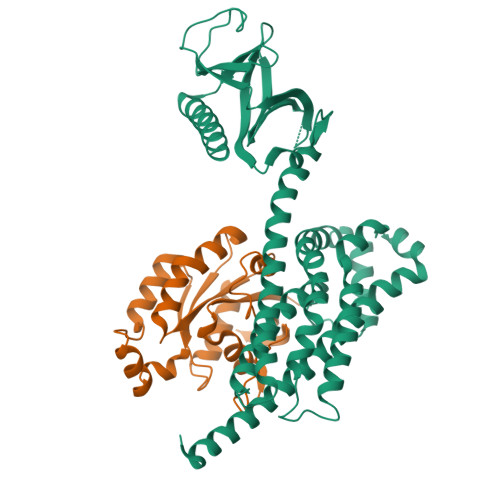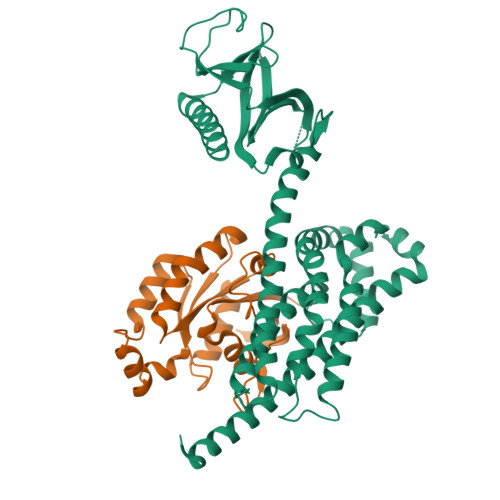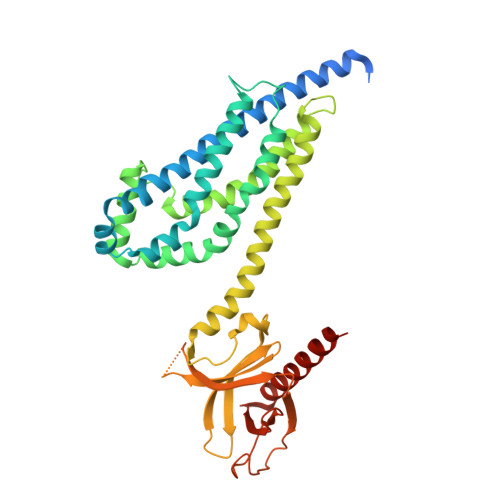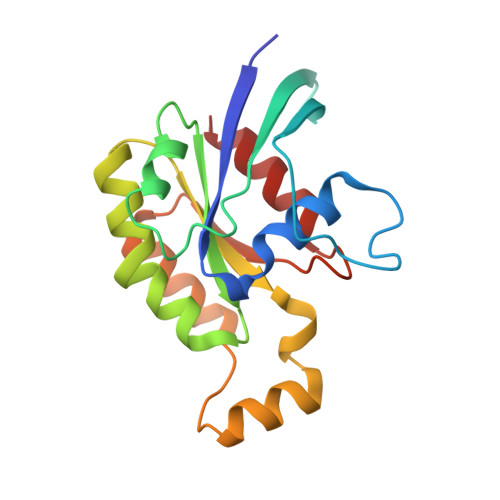The Phosphatidylinositol (3,4,5)-Trisphosphate-dependent Rac Exchanger 1Ras-related C3 Botulinum Toxin Substrate 1 (P-Rex1Rac1) Complex Reveals the Basis of Rac1 Activation in Breast Cancer Cells.
Lucato, C.M., Halls, M.L., Ooms, L.M., Liu, H.J., Mitchell, C.A., Whisstock, J.C., Ellisdon, A.M.(2015) J Biological Chem 290: 20827-20840
- PubMed: 26112412
- DOI: https://doi.org/10.1074/jbc.M115.660456
- Primary Citation of Related Structures:
4YON - PubMed Abstract:
The P-Rex (phosphatidylinositol (3,4,5)-trisphosphate (PIP3)-dependent Rac exchanger) family (P-Rex1 and P-Rex2) of the Rho guanine nucleotide exchange factors (Rho GEFs) activate Rac GTPases to regulate cell migration, invasion, and metastasis in several human cancers. The family is unique among Rho GEFs, as their activity is regulated by the synergistic binding of PIP3 and Gβγ at the plasma membrane. However, the molecular mechanism of this family of multi-domain proteins remains unclear. We report the 1.95 Å crystal structure of the catalytic P-Rex1 DH-PH tandem domain in complex with its cognate GTPase, Rac1 (Ras-related C3 botulinum toxin substrate-1). Mutations in the P-Rex1·Rac1 interface revealed a critical role for this complex in signaling downstream of receptor tyrosine kinases and G protein-coupled receptors. The structural data indicated that the PIP3/Gβγ binding sites are on the opposite surface and markedly removed from the Rac1 interface, supporting a model whereby P-Rex1 binding to PIP3 and/or Gβγ releases inhibitory C-terminal domains to expose the Rac1 binding site.
Organizational Affiliation:
Department of Biochemistry and Molecular Biology, School of Biomedical Sciences, Monash University, Clayton, Victoria 3800, Australia; Australian Research Council Centre of Excellence in Advanced Molecular Imaging, Monash University, Clayton, Victoria 3800, Australia.



















